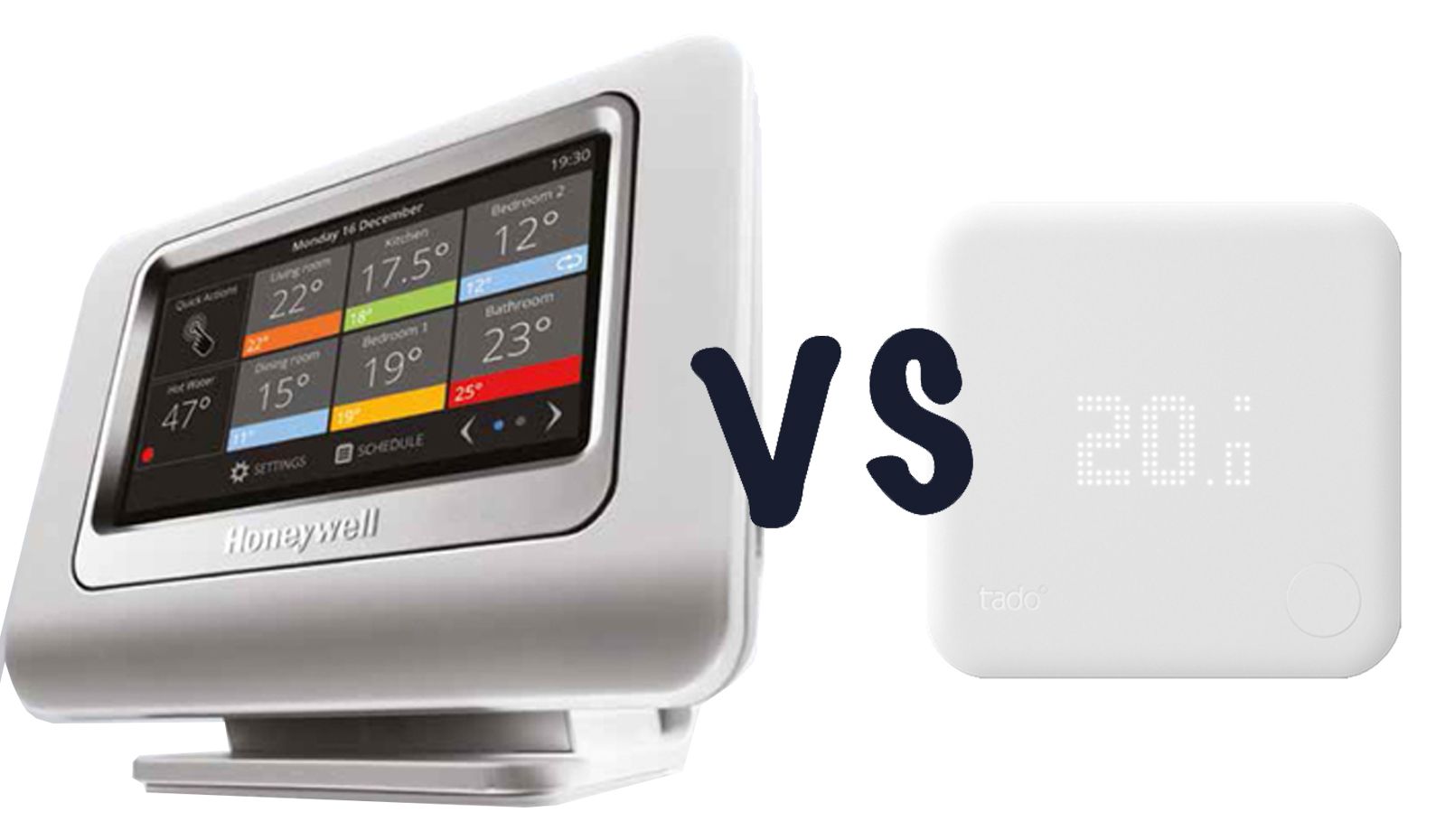There are several smart heating systems available, all of which offer the ability to control your heating remotely from a smartphone or tablet.
Each system also has a variety of features though, and it will depend on what it is you want from your heating as to which one is right for you.
We have put Honeywell's Evohome and Tado 2.0 up against each other so you can see how each system works, what the cost implications are and how the two systems differ.
Honeywell Evohome and Tado 2.0: Quick summary
Honeywell's Evohome enables the creation and control up to 12 heating zones and hot water. Rooms can be grouped together or controlled individually and each radiator can also be controlled separately.
Tado 2.0 uses the location of the user's smartphone to ensure no energy is wasted. The Tado system reduces the temperature in a home to an optimal level when the last person leaves and increases it again when you're nearby.
Honeywell Evohome and Tado 2.0: Features
The Evohome system comes with a central control unit that allows for full control when you don't want to use your smartphone or tablet. Each radiator can be controlled down to a degree and you can also control underfloor heating with a separate module.
With the ability to control rooms and radiators individually, you can set just the bedroom and bathroom to be lovely and warm when you wake up for example, as well as set one radiator to make sure you have hot socks and pants. Radiator zone kits are bought separately to the main system.
There is also the timings element, whereby you can set individual times and temperatures for each room. Over time, Evohome will analyse your home to work out how quickly it can heat the room but if you set your kitchen to be 20C at 6pm, it will be this temperature at this time, rather than start heating it up at 6pm.
READ: Honeywell Evohome review
Tado 2.0 doesn't allow for individual radiator control or room control and instead, it sets a temperature for the entire home. You can turn individual radiators off so a particular room isn't heated, but you will have to do this physically rather than remotely. The home temperature can be adjusted on the small white square unit but the app is where more advanced settings are adjusted so it is more app based than Evohome.
Tado 2.0 will assess your home to work out the most efficient way to heat it and it will also check the weather forecast so it won’t turn the heating on if it thinks the sun can do a better job. Hot water can also be controlled via Tado, but it requires an extension kit.
You can also set heating schedules for Tado as you can with Evohome, and there is also the option to set a specific temperature for when you are sleeping.
Honeywell Evohome and Tado 2.0: Installation
Honeywell's Evohome is suitable for any home with a hydronic (wet) central heating system. It doesn't disrupt any existing pipework or décor and it won't damage any fittings or fixtures. It does require a professional installer though.
Tado 2.0 will work with almost all systems including combi system and heat-only boilers, as well as conventional and condensing, zoned systems, hydronic and electric underfloor systems, plus heat pumps. The idea is that you can install it yourself, but there is a professional installer service for those that don't fancy that.
Honeywell Evohome and Tado 2.0: Cost implications
Honeywell has a system builder that allows you to create an Evohome product to suit your individual home. It asks you a range of questions from the kind of boiler you have to the number of zones you are looking to create. You then custom build the system to how you want it and at the end of all the questions, you'll get a breakdown of your potential savings with Evohome and what you will need to buy.
We created a system based on six rooms comprising a bathroom, kitchen, living room and three bedrooms. We put two radiators in four of the rooms and one in the other two. Evohome starts at £250, but the system we created here would cost just over £700.
Tado 2.0 costs £199 or you can rent it for £7.99 a month, so it is significantly cheaper than Evohome.
Conclusion
The Honeywell Evohome system may be more expensive than the Tado option, but it gives you more control. Both are easy systems to use but the ability to control radiators and rooms individually will be more appealing to some than just remote control over the temperature of the entire house.
Ultimately it will boil down to how much you want to spend. Both systems provide smartphone control, both offer scheduling features and both take into account your building and the weather to efficiently heat your home.
Evohome offers more advanced control overall, while Tado uses your smartphone's location as its way of being clever and it doesn't require a professional installer. Essentially, if you want entire control over your home and all the rooms in it, Evohome is your best bet on this occasion despite its cost, and if you are looking to keep the cost down but you want remote control of your heating, Tado will cut it.

